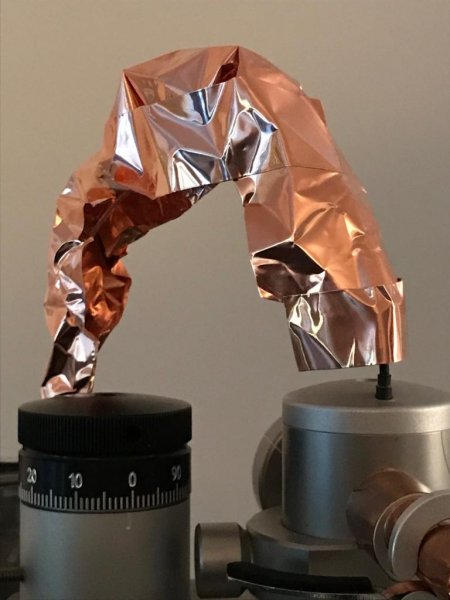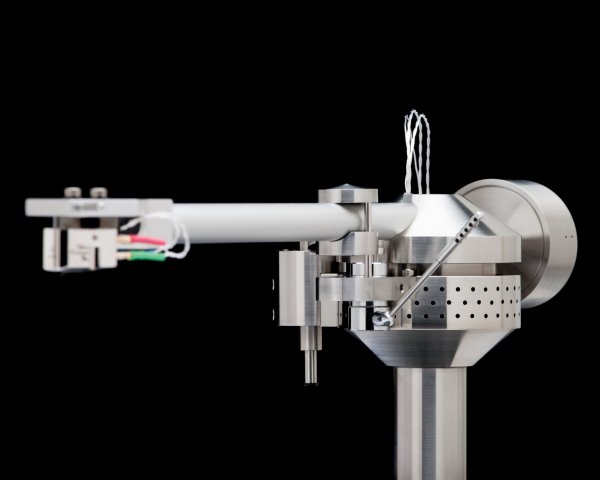Are exposed tonearm wires susceptible to noise pick up?
In a recent post elsewhere here, bare tonearm wires were shown going from the cartridge over the armwand, somewhere out back, and I contended that this runs the risk of exposing them to noise pick up. In fact, in my own VPI arm, the tail end of the wires is also out in the wild, before ending up up in a junction box, and so are Basis' own Super Arm's (see below). The difference between my wires and Basis' is that I have a single cable with 5 wires in it, which means the ground wraps the others to some degree, and in Basis' case, there are separate in a 2+2+1 configuration, which tells me the signal wires are more exposed than mine.
Is this a problem? Well, simply squeezing my exposed wires with my hand picks up hum (not just touching, but squeezing the entire cable). So would anyone believe that the concoction below with the copper shield actually yielded quite significant improvements? There have always been certain piano and violin treble notes which sounded a bit more pronounced than others, and I couldn't figure out why (keep in mind my panel's frequency response is virtually flat); the problem was really evident with many instruments in the same region, so I had to accept it as a fault... this shield has ameliorated this problem and improved the overall sound quite a bit; and it also strengthens my aversion for non-metallic armwands of any kind, or any arm that exposes wires more than necessary...
I am curious what others think and what their experiences have been.
Here's my experimental concoction to shield the cable underneath it (cable not touching the shield), while I am looking for ways to turn it into a proper copper (pipe?) conduit...

And here's Basis' own Super Arm :

In a recent post elsewhere here, bare tonearm wires were shown going from the cartridge over the armwand, somewhere out back, and I contended that this runs the risk of exposing them to noise pick up. In fact, in my own VPI arm, the tail end of the wires is also out in the wild, before ending up up in a junction box, and so are Basis' own Super Arm's (see below). The difference between my wires and Basis' is that I have a single cable with 5 wires in it, which means the ground wraps the others to some degree, and in Basis' case, there are separate in a 2+2+1 configuration, which tells me the signal wires are more exposed than mine.
Is this a problem? Well, simply squeezing my exposed wires with my hand picks up hum (not just touching, but squeezing the entire cable). So would anyone believe that the concoction below with the copper shield actually yielded quite significant improvements? There have always been certain piano and violin treble notes which sounded a bit more pronounced than others, and I couldn't figure out why (keep in mind my panel's frequency response is virtually flat); the problem was really evident with many instruments in the same region, so I had to accept it as a fault... this shield has ameliorated this problem and improved the overall sound quite a bit; and it also strengthens my aversion for non-metallic armwands of any kind, or any arm that exposes wires more than necessary...
I am curious what others think and what their experiences have been.
Here's my experimental concoction to shield the cable underneath it (cable not touching the shield), while I am looking for ways to turn it into a proper copper (pipe?) conduit...

And here's Basis' own Super Arm :


